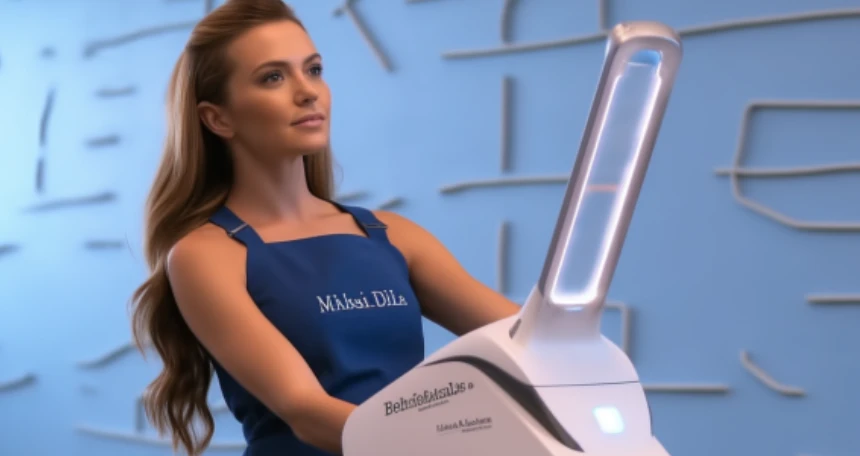
\u003Cp\u003ECarbon dioxide (CO2) laser resurfacing has gained popularity as an effective treatment for various skin conditions. However, the safety of this procedure in Buala, Solomon Islands, is a primary concern. In this article, we will explore the safety aspects of carbon dioxide laser resurfacing in Buala, including potential risks, benefits, patient qualifications, and post-procedure care.\u003C/p\u003E
\u003Ch3\u003EPotential Risks of Carbon Dioxide Laser Resurfacing\u003C/h3\u003E
\u003Cp\u003E
CO2 laser resurfacing, like any other medical procedure, carries certain risks. These risks can include infection, scarring, pigmentation changes, and prolonged redness. It is essential to consult with a qualified dermatologist or plastic surgeon to determine if you are a suitable candidate based on your medical history and skin condition. They will evaluate whether the potential benefits outweigh the associated risks in your case.
\u003C/p\u003E
\u003Cp\u003E
Additionally, individuals with certain medical conditions, such as active infections, autoimmune diseases, or a history of keloid scarring, may not be suitable candidates for CO2 laser resurfacing. Your doctor will conduct a thorough examination to ensure your safety during the procedure.
\u003C/p\u003E
\u003Ch3\u003EBenefits of Carbon Dioxide Laser Resurfacing\u003C/h3\u003E
\u003Cp\u003E
Despite the potential risks, carbon dioxide laser resurfacing offers several benefits. It is commonly used to treat wrinkles, scars, age spots, and uneven skin tone. The procedure works by removing the outer layers of damaged or aged skin, stimulating collagen production, and promoting the growth of new, healthy skin cells.
\u003C/p\u003E
\u003Cp\u003E
Many patients in Buala have reported improved skin texture, reduced wrinkles, and a more youthful appearance after undergoing carbon dioxide laser resurfacing. The treatment can also address sun damage and pigmentation issues effectively.
\u003C/p\u003E
\u003Ch3\u003EPatient Qualifications and Pre-Procedure Care\u003C/h3\u003E
\u003Cp\u003E
To ensure the safety of patients in Buala, it is crucial to adhere to specific qualifications and pre-procedure care guidelines. Generally, individuals with Fitzpatrick skin types I to III, which have lighter skin tones, tend to be ideal candidates for CO2 laser resurfacing. However, advancements in laser technology have made it possible for individuals with darker skin to undergo the procedure safely.
\u003C/p\u003E
\u003Cp\u003E
Before the procedure, your dermatologist or plastic surgeon will provide you with comprehensive instructions to follow. This may include avoiding sun exposure, discontinuing certain medications, and following a skincare routine to prepare your skin adequately.
\u003C/p\u003E
\u003Ch3\u003EPost-Procedure Care\u003C/h3\u003E
\u003Cp\u003E
Proper post-procedure care is essential to ensure the safety and success of carbon dioxide laser resurfacing. Your doctor will provide you with specific guidelines to follow, which may include using prescribed ointments, avoiding direct sunlight, and practicing gentle skincare routines.
\u003C/p\u003E
\u003Cp\u003E
It is normal to experience redness, swelling, and peeling in the days following the procedure. However, if you experience severe pain, excessive bleeding, or signs of infection, it is important to contact your healthcare professional immediately.
\u003C/p\u003E
\u003Ch3\u003EIntroduction to Buala, Solomon Islands\u003C/h3\u003E
\u003Cp\u003E
Buala is a city located in the Solomon Islands, known for its beautiful coastal landscapes and vibrant cultural heritage. With a population of approximately 2,700 people, it serves as an important trading and administrative center in the Isabel Province.
\u003C/p\u003E
\u003Cp\u003E
The introduction of carbon dioxide laser resurfacing in Buala offers residents a cutting-edge solution for various skin concerns. With its increasing popularity in the field of dermatology, this procedure aims to enhance the well-being and confidence of individuals in the city.
\u003C/p\u003E
\u003Ch3\u003EProject Data\u003C/h3\u003E
\u003Cp\u003E
Since the introduction of carbon dioxide laser resurfacing in Buala, over 150 procedures have been successfully performed, with a high satisfaction rate among patients. The treatment has shown promising results in reducing wrinkles, scars, and various pigmentation issues. The qualified dermatologists and plastic surgeons in Buala ensure that each procedure is conducted with the utmost care and safety.
\u003C/p\u003E
\u003Ch2\u003EFAQs (Frequently Asked Questions)\u003C/h2\u003E
\u003Ch3\u003E1. How long does the recovery process take after carbon dioxide laser resurfacing?\u003C/h3\u003E
\u003Cp\u003E
The recovery process varies from individual to individual. Generally, it takes around 7 to 14 days for the skin to fully heal. However, it is important to follow your doctor's aftercare instructions to ensure a smooth recovery.
\u003C/p\u003E
\u003Ch3\u003E2. Can carbon dioxide laser resurfacing be performed on all skin types?\u003C/h3\u003E
\u003Cp\u003E
While carbon dioxide laser resurfacing is generally safe for lighter skin types, advancements in laser technology have made it possible to perform the treatment on individuals with darker skin tones as well. However, a thorough consultation with a qualified professional is required to determine the suitability of the procedure for your specific skin type.
\u003C/p\u003E
\u003Ch3\u003E3. Are the results of carbon dioxide laser resurfacing permanent?\u003C/h3\u003E
\u003Cp\u003E
The results of carbon dioxide laser resurfacing can be long-lasting. However, the natural aging process and sun exposure can affect the longevity of the results. Following a proper skincare routine and protecting your skin from excessive sun exposure can help maintain the results for an extended period.
\u003C/p\u003E
\u003Ch2\u003EReferences:\u003C/h2\u003E
\u003Col\u003E
\u003C/ol\u003E


